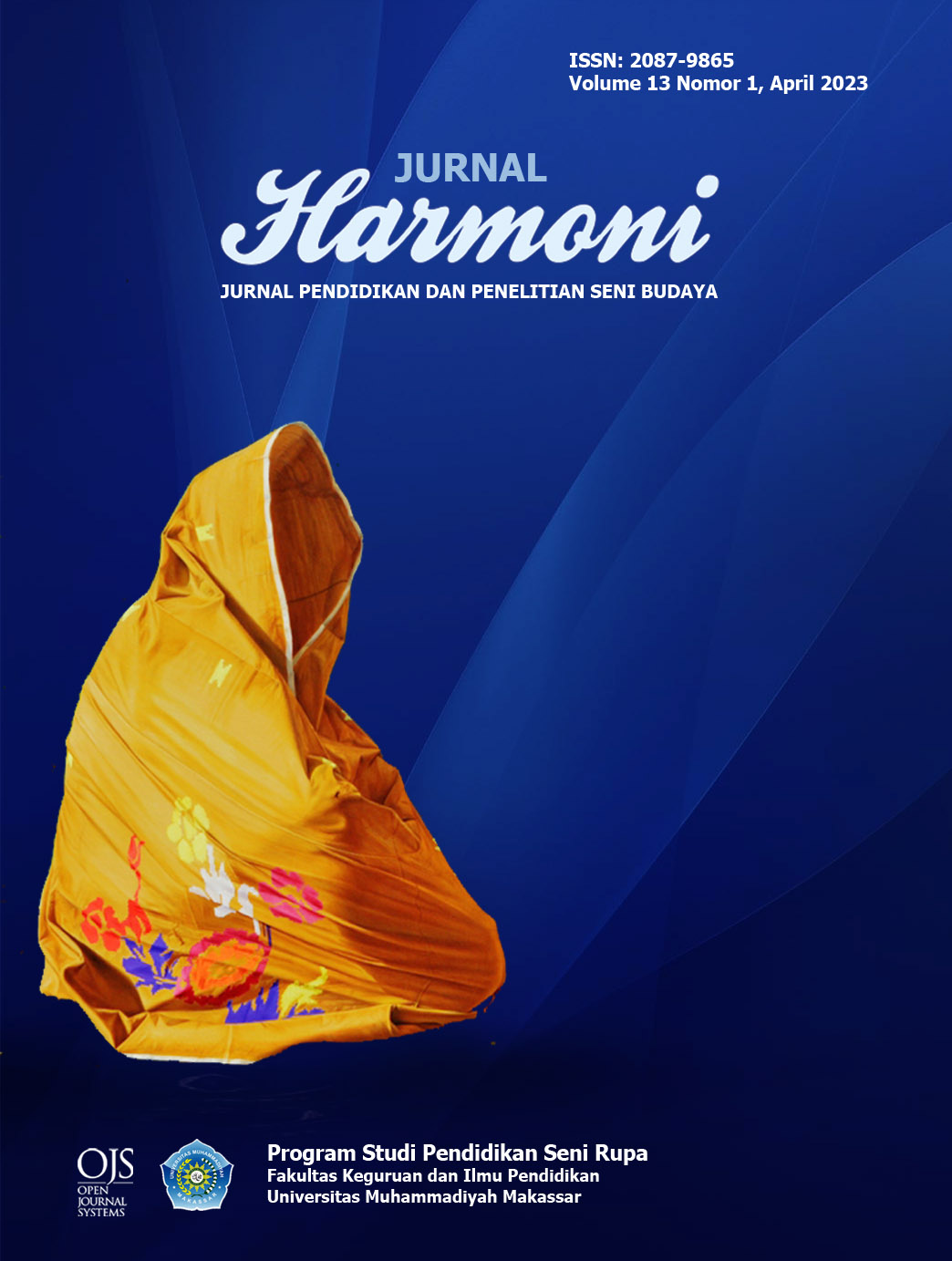KONSERVASI ISLAM SEBAGAI ASAS BERKARYA PRODI PENDIDIKAN SENI RUPA UNISMUH
DOI: https://doi.org/10.26618/jh.v13i1.12318
Islamic conservation, principles of fine arts education, orientation of fine arts works
Abstrak
This research aims to explain the implementation of Islamic values as educational principles in creating fine arts in the Fine Arts Education study program, Faculty of Teacher Training and Education, Muhammadiyah University of Makassar. The type of research used is qualitative-explanatory research, which provides an explanation of why the fine arts education study program uses Islamic values as an educational and teaching concept. Furthermore, the results of this research show that the only fine arts education study program within the scope of Muhammadiyah Higher Education in Indonesia is at Muhammadiyah University of Makassar. So that artistic practice in producing works of fine art is based on Islamic Kemuhammadiyahan values. The concept of application in education and teaching is demonstrated through the curriculum, art creation and study studies, research and community service as well as the achievement of graduate profiles. In the aspect of creating fine arts, the orientation of the work always uses ethics, content and context based on Islamic Muhammadiyah.Referensi
Ali, Matius, 2011. Estetika: Pengantar Filsafat Seni, Cetakan ke-3, Jakarta; Penerbit Sanggar Luksor.
Bakker, Peter Jan, 1984. Filsafat Kebudayaan: Sebuah Pengantar, Cetakan ke-15, Yogyakarta: Penerbit Kanisius
Coote, Jeremi and Anthony Shelton, 1992. Anthropology Art and Aestetics, Claredon Press, Oxpord.
Daeng, Hans J., 2000. Manusia, Kebudayaan dan Lingkungan: Tinjauan Antropologis, Cetakan I, Yogyakarta: Pustaka Pelajar.
Feldman, E. Burke, 1967. Art as Image and Ideas, Englewood Cliffs, New Jersey: Prentice Hall, Inc.
Hartoko, Dick, 1991. Manusia dan Seni, Cetakan ke-5, Yogyakarta: Penerbit Kanisius
Holt, Claire, (Editor: Ade Ma’ruf dan Anas Syahrul Alimi), 2000. Melacak Jejak Perkembangan Seni di Indonsia, Terjemahan Yogyakarta: MSPI.
Read, Herbert, 1959. The Meaning of Art, London: Pinguin Book
Rohidi, Tjetjep Rohendi, 2000. Ekspresi Seni Orang Miskin: Adaptasi Simbolik terhadap Kemiskinan, Yayasan Nuansa Cendekia.
Sedyawati, Edi (Universitas Indonesia), 1986. Local Genius dalam Kesenian Indonesia, dalam buku: Kepribdian Budaya Bangsa (Local Genius), Penyunting Ayatrohaedi, Cetakan I, hlm. 186-191, Jakarta: Pustaka Jaya.
Sony Kartika, Dharsono, 2004. Seni Rupa Modern, Cetakan I, Bandung; Penerbit Rekayasa Sains.
Sony Kartika, Dharsono, 2007. Estetika Seni Rupa Nusantara, Cetakan I, Surakarta; Penerbit ISI Press Solo.
Sony Kartika, Dharsono, 2011. Estetika Nusantara: Orientasi Terhadap Filsafat, Kebudayaan, Pandangan Masyarakat, dan Paradigma Seni, Prosidding Seminar Nasional, hlm, 4-35, Surakarta: ISI Press.
Sugiharto, Bambang, 2014. Untuk Apa Seni, Cetakan II, Bandung; Penerbit Matahari.
Sumardjo, Jakob, 2006. Estetika Paradoks, Cetakan I, Bandung; Penerbit Sunan Ambu STSI Press.


